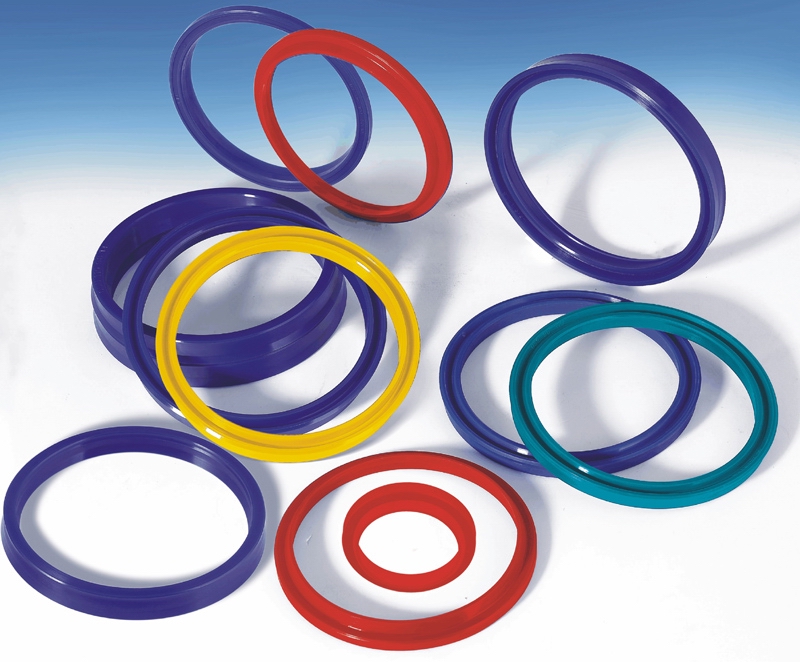Polyurethane rubber seals, crafted from polyurethane rubber materials, are integral components in a wide range of industrial applications. These seals come in various forms, including O-rings, V-rings, U-rings, Y-rings, rectangular seals, custom-shaped seals, and sealing washers.
Polyurethane rubber, a synthetic polymer, bridges the gap between natural rubber and conventional plastics. Predominantly used in metal sheet pressure processing, the polyurethane rubber in question is primarily of the polyester casting type. It is synthesized from adipic acid and ethylene glycol, resulting in a polymer with a molecular weight of approximately 2000. This polymer is further reacted to form a prepolymer with isocyanate end groups. The prepolymer is then mixed with MOCA (4,4′-methylenebis(2-chloroaniline)) and cast into molds, followed by secondary vulcanization to produce polyurethane rubber products with varying hardness levels.
The hardness of polyurethane rubber seals can be tailored to meet specific sheet metal processing requirements, ranging from 20A to 90A on the Shore hardness scale.
Key Performance Characteristics:
-
Exceptional Wear Resistance: Polyurethane rubber exhibits the highest wear resistance among all rubber types. Laboratory tests indicate that its wear resistance is 3 to 5 times that of natural rubber, with real-world applications often showing up to 10 times the durability.
-
High Strength and Elasticity: Within the Shore A60 to A70 hardness range, polyurethane rubber demonstrates high strength and excellent elasticity.
-
Superior Cushioning and Shock Absorption: At room temperature, polyurethane rubber components can absorb 10% to 20% of vibration energy, with higher absorption rates at increased vibration frequencies.
-
Excellent Oil and Chemical Resistance: Polyurethane rubber shows minimal affinity for non-polar mineral oils and remains largely unaffected by fuels (such as kerosene and gasoline) and mechanical oils (like hydraulic and lubricating oils), outperforming general-purpose rubbers and rivaling nitrile rubber. However, it exhibits significant swelling in alcohols, esters, and aromatic hydrocarbons.
-
High Friction Coefficient: Typically above 0.5.
-
Additional Properties: Good low-temperature resistance, ozone resistance, radiation resistance, electrical insulation, and adhesion properties.
Applications:
Given its superior physical and mechanical properties, polyurethane rubber is frequently employed in high-performance applications, including wear-resistant products, high-strength oil-resistant items, and high-hardness, high-modulus components. It finds extensive use across various industries:
-
Machinery and Automotive: Manufacturing high-frequency braking buffer elements, anti-vibration rubber parts, rubber springs, couplings, and textile machinery components.
-
Oil-Resistant Products: Producing printing rollers, seals, fuel containers, and oil seals.
-
Harsh Friction Environments: Used in conveyor pipes, grinding equipment linings, screens, filters, shoe soles, friction drive wheels, bushings, brake pads, and bicycle tires.
-
Cold Pressing and Bending: Serving as a material for new cold pressing and bending processes, replacing steel dies that are time-consuming and costly.
-
Foam Rubber: By leveraging the reaction of isocyanate groups with water to release CO2, lightweight foam rubber with excellent mechanical properties can be produced, ideal for insulation, heat insulation, soundproofing, and anti-vibration applications.
-
Medical Applications: Used in functional rubber components, artificial blood vessels, synthetic skin, infusion tubes, repair materials, and dental applications.
Post time: Sep-17-2025

